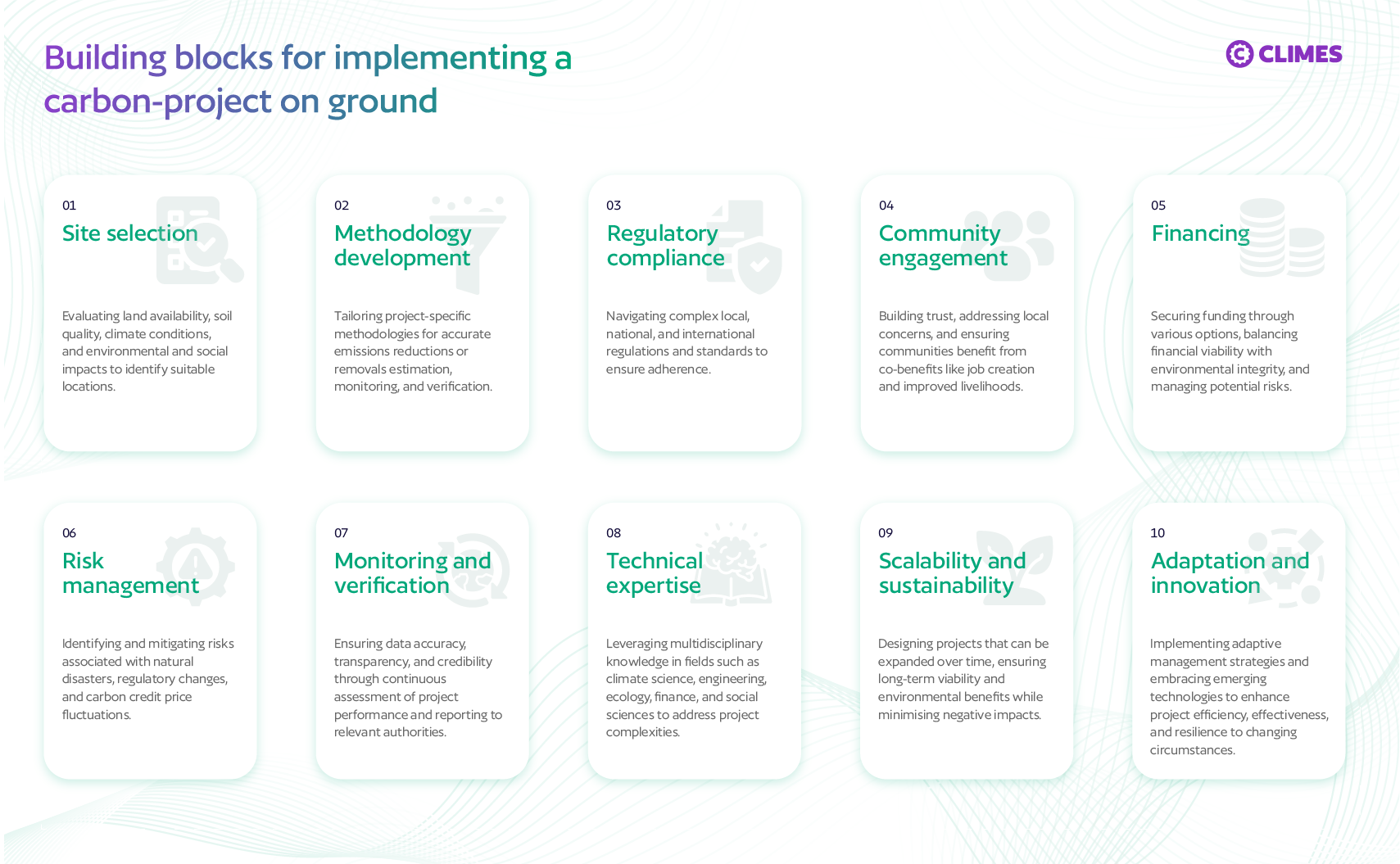Of faucets, nature-based solutions, and the Voluntary Carbon Markets
Let’s start with some trivia. Here is the story of the first carbon credit.
“In 1988, Applied Energy Services (now AES) planned to build small coal-fired power plants around the United States, selling the electricity to local utilities. But the CEO of AES, Roger Sant, was concerned about climate change.
He approached the Washington, DC based World Resources Institute (WRI) to explore whether AES could do anything to mitigate the climate change impacts of its business model. The result of that consultation was AES’s decision to fund carbon offset projects.”
Expanding Offset Markets? Great Idea or Wilful Blindness – ghginstitute.org
Voluntary markets provide a mechanism for businesses, individuals, and governments to offset their carbon emissions by purchasing carbon credits from projects that reduce or remove carbon from the atmosphere. It has received its share of criticism for its shortcomings and for potentially enabling greenwashing. It is also undeniably one of the most viable ways that we have at our disposal to incentivise carbon removal and accelerate the transition to a low-carbon economy.
A large part of the criticism stems from whether voluntary carbon markets are effective in facilitating meaningful climate action. And integrity of the generated credits is the metric its effectiveness is measured against.
“All credits must represent real, additional, and permanent carbon reductions or removals.”
But here is the thing. Everybody says that their credits are or will be real, additional, and high-quality. Including the ones that greenwash.
A quick meta-study of the various voluntary carbon market principles that exist will show you that all of them include these attributes word-for-word.
If everyone’s saying it, and somehow carbon markets continue to be plagued with material questions around the attributes of its quality and effectiveness, it begs one question. What’s missing?
“When the faucet drips, you don't start mopping the floor before you fix the leak”
You also don’t dismantle the faucet (that is voluntary carbon markets) because of a leak, as some seem to suggest.
Designing and implementing a carbon project on the ground is a complex undertaking. It includes a number of building blocks.

A few standards and certification programs have emerged as stewards of voluntary carbon markets and are improving the rigour in the climate action financed through their prescribed methodologies. Some stand head-and-shoulders above others, simply because they have been around since the inception of voluntary carbon markets. Some are upstarts looking to fix an alleged insufficiency in climate action rigour. The list includes the Verified Carbon Standard, Gold Standard, and puro.earth, among others. It is important to acknowledge that these organisations continue to evolve in tandem with the exponential increase in capital flowing towards carbon avoidance and removal.
It is a safe assumption that carbon avoidance projects that were a part of the Clean Tech 1.0 era (here is a hot take from the Wired), and the carbon credits generated from those were just the start. For all the shortcomings and inadequacies, the financing mechanism is theoretically functional in moving climate finance from high-emitters to climate action projects on the ground. It was only a matter of time before the very functional financing mechanism started financing better quality climate action projects, i.e., carbon removal.
While enhanced weathering and direct air capture (DAC) are promising carbon removal technologies, they are currently at nascent stages of both development and deployment. Enhanced weathering is still in the experimental phase, with research primarily focused on understanding its potential and limitations. Similarly, DAC, which involves capturing CO2 directly from ambient air, is pre-commercialisation, with only a few operational plants worldwide.
The scaling up of these technologies to achieve a significant impact on global carbon removal will take time and substantial investment. Several factors contribute to the slow progress, including high costs, energy requirements, and infrastructural challenges. It may take years, if not decades, for such solutions to become effective at scale.
In the meantime, it is essential to prioritise nature-based solutions and other established carbon removal methods that offer more immediate benefits. Ramping investments in these proven approaches alongside continued research and development of emerging technologies is a sensible roadmap to making a significant dent on our global emissions.
Fixing the leak in the faucet that is Nature-based Solutions
Nature-based solutions involve using natural ecosystems to remove carbon dioxide from the atmosphere. This includes afforestation, reforestation, soil management, and marine ecosystem restoration, among others. Nature-based solutions are generally less expensive, more scalable, and have multiple co-benefits, such as improving biodiversity, water quality, and soil health.
Despite having the potential to provide one-third of climate mitigation potential, the amount of finance that is flowing into nature-based solutions and land-use projects is ~ 2% of the total climate finance that has been mobilised. (Refer to the image below)
I am going to use my new-favourite carbon markets analogy once again here.
This time the faucets aren’t the whole of the voluntary carbon markets - but specifically forestry and regenerative agriculture projects. When it comes to fixing a faucet, everything from the number of plumbers available to how many have the capability to fix the faucet is directly proportional to the number of faucets there are.
All this while capital hasn’t been flowing into making faucets.
It is only natural (pun intended) that there aren’t that many plumbers around (plumbers = people invested in improving the rigour of NBS projects).
While it might be fair to say there haven’t been improvements in the quality of NBS solutions, it would be incomplete without qualifying the amount of capital that has been deployed into these projects.
NBS faucets are leaky, but you still get the water you want a faucet to provide.
Enhancing the Viability of Nature-based Carbon Removal
It is only fair that we also discuss the challenges that hinder the adoption and financing of nature-based solutions, despite the potential.
One of the biggest challenges is the lack of bankability of nature-based solutions.
Bankability refers to the ability of a project to attract financing from investors and lenders. Nature-based solutions are often considered risky and do not offer the same financial returns as technology-based solutions. Other challenges include uncertainties regarding the permanence of carbon sequestration, potential leakage of carbon, and lack of regulatory frameworks
Standardised methodologies for measuring and verifying carbon sequestration can help reduce uncertainties and provide investors with the confidence they need to finance nature-based projects.
The development of standardised methodologies is underway, with organisations such as the Verified Carbon Standard and Gold Standard. We are making significant strides in building tools and solutions that enhance project quality and transparency. Leveraging cutting-edge technologies such as remote sensing, artificial intelligence, and blockchain can not only streamline measurement, reporting, and verification (MRV) processes but also minimise the chances of fraud and manipulation.
“All carbon credits are equal, some carbon credits are more equal than others”
This rather dystopian take is why it is imperative to have a comprehensive Digital-MRV process that acts as the single source of truth for carbon projects. Any scrutiny of the voluntary carbon markets presents actors within the market with an opportunity to improve the quality of climate action taken. One of the biggest levers to achieve that is via a robust tech-based MRV process that improves transparency and accountability. This is all the more relevant in the context of developing markets where data paucity and limited data availability is an operational reality.
Climes exclusively originates and aggregates projects in developing markets with the thesis that the Global South serves as a better carbon sink, for a few reasons. These include a distinct topographical advantage and a greater incidence of natural ecosystems, opportune time given the baseline levels of industrialisation, and the materially high social costs of carbon emissions compared to the Global North.
There are certain aspects unique to developing markets that render it necessary to develop processes tailored to the local realities of carbon project development. Some examples include:
- Highly fragmented landholding; per farmer average is < 1 ha.
- Limited public data availability on agro-climatic variables and variability across different regions
- Minimal technological orientation for farmers to digitise and maintain historical data
Carbon credits, once seen as a mere curiosity (among other things it was seen as), are one of the few proven market mechanisms for getting climate finance moving. While avoiding carbon is an important first step, we really need to focus on innovative carbon removal solutions for meaningful climate action. The current reality of carbon removal solutions is that there is a trade-off between volume and durability of solutions. Enhanced weathering, DAC etc., while they rank high on durability, their current volumes do not affect large-scale climate action. They are on their way there, yes, but just not today.
Nature-based solutions are effective, affordable, and widely accessible.
The bankability of NBS is directly linked to the investments made to improve their viability. Material improvements in digital-MRV bring more rigour and accountability to voluntary carbon markets. High-quality data is the first step to achieving high-quality carbon credits. As these markets evolve, it's essential to encourage collaboration between stakeholders, make the most of technological advancements like climes.soil, and put robust regulatory frameworks in place. By doing all this and bolstering the strengths of NBS, we're well on our way to a more sustainable and climate-resilient future for everyone. All we must do is fix a leaky faucet and make more of them.
Interested to create impact with us? Fill out this form!

